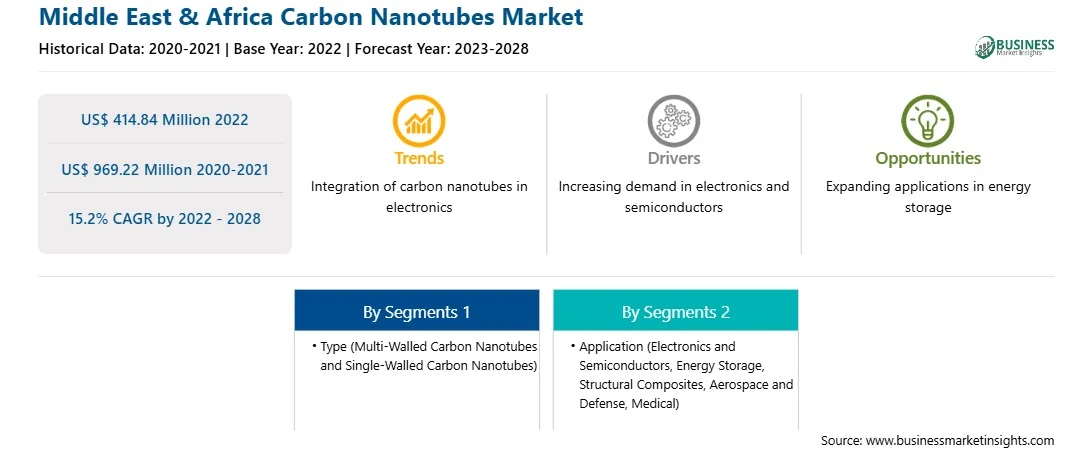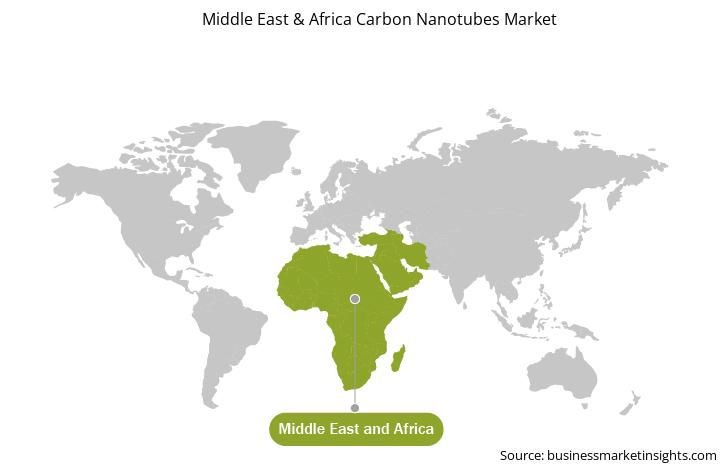According to the World Health Organization, cancer has been the leading cause of death worldwide, registering 9.6 million and 10 million deaths in 2018 and 2020, respectively. Several types of research focused on developing efficient cancer treatment processes have been conducted; however, optimum technology to reduce cancer-causing deaths has not been achieved. In the past few years, nanotechnology has emerged as an alternative treatment technology for several disorders, specifically cancer.
The recent advancement in drug delivery and cancer treatment involves the utilization of nanocarriers, such as CNTs, solid lipid nano capsules, magnetic nanoparticles, gold nanoparticles, and liposomes. The electrical, optical, chemical, and mechanical properties of CNTs are employed in drug delivery systems, biomedical imaging, and antimicrobial technology. Therefore, CNT-based anticancer drug delivery technology is gaining popularity, especially due to its selective targeting and controlling of drug delivery. Scientists have developed a novel technology to directly introduce the anticancer drug—doxorubicin—through CNTs from spherical sacs of phospholipid molecules (liposomes) via the cell plasma membrane. This fusion process allows the drug to pass freely from the liposome to the cell. This results in the effective delivery of doxorubicin, killing up to 90% of disordered cells. Thus, the adoption of CNTs in cancer treatment can create lucrative growth opportunities for the carbon nanotubes market during the forecast period.
The carbon nanotubes market in the Middle East & Africa is segmented into South Africa, Saudi Arabia, the UAE, and the Rest of Middle East & Africa. The regional market is still at a nascent stage, with limited adoption in various industries. The region has received significant investments in research and development related to carbon nanotubes, which could propel the market growth. The UAE is one of the key countries driving the growth of the carbon nanotubes market in the region. In 2021, researchers at the Khalifa University of Science and Technology in Abu Dhabi developed a new method for producing high-quality carbon nanotubes using a chemical vapor deposition process. The researchers demonstrated the potential of these carbon nanotubes in applications such as energy storage and water filtration. Moreover, other countries in the region such as Saudi Arabia and Egypt are investing in research and development related to carbon nanotubes. In 2020, researchers at King Abdullah University of Science and Technology (KAUST) in Saudi Arabia developed a new method for producing carbon nanotubes using high-pressure carbon monoxide (HiPco) synthesis technique. The resulting carbon nanotubes were found to have high purity and excellent mechanical properties, such as high elastic modulus and tensile strength, with potential applications in fields such as electronics and energy storage.
South Africa is another key country in the carbon nanotubes market in the Middle East & Africa, with several companies such as Nanocyl SA and CNT Technologies producing and commercializing carbon nanotubes. In addition, several research institutions such as the Council for Scientific and Industrial Research (CSIR) are conducting research on carbon nanotubes and their applications.
Strategic insights for the Middle East & Africa Carbon Nanotubes provides data-driven analysis of the industry landscape, including current trends, key players, and regional nuances. These insights offer actionable recommendations, enabling readers to differentiate themselves from competitors by identifying untapped segments or developing unique value propositions. Leveraging data analytics, these insights help industry players anticipate the market shifts, whether investors, manufacturers, or other stakeholders. A future-oriented perspective is essential, helping stakeholders anticipate market shifts and position themselves for long-term success in this dynamic region. Ultimately, effective strategic insights empower readers to make informed decisions that drive profitability and achieve their business objectives within the market. The geographic scope of the Middle East & Africa Carbon Nanotubes refers to the specific areas in which a business operates and competes. Understanding local distinctions, such as diverse consumer preferences (e.g., demand for specific plug types or battery backup durations), varying economic conditions, and regulatory environments, is crucial for tailoring strategies to specific markets. Businesses can expand their reach by identifying underserved areas or adapting their offerings to meet local demands. A clear market focus allows for more effective resource allocation, targeted marketing campaigns, and better positioning against local competitors, ultimately driving growth in those targeted areas.Middle East & Africa Carbon Nanotubes Strategic Insights

Middle East & Africa Carbon Nanotubes Report Scope
Report Attribute
Details
Market size in 2022
US$ 414.84 Million
Market Size by 2028
US$ 969.22 Million
CAGR (2022 - 2028) 15.2%
Historical Data
2020-2021
Forecast period
2023-2028
Segments Covered
By Type
By Application
Regions and Countries Covered
Middle East and Africa
Market leaders and key company profiles
Middle East & Africa Carbon Nanotubes Regional Insights

Middle East & Africa Carbon Nanotubes Market Segmentation
The Middle East & Africa carbon nanotubes market is segmented into type, application, and country.
Based on type, the Middle East & Africa carbon nanotubes market is bifurcated into multi-walled carbon nanotubes, and single-walled carbon nanotubes. The multi-walled carbon nanotubes segment registered the largest market share in Middle East & Africa carbon nanotubes market in 2022.
Based on application, the Middle East & Africa carbon nanotubes market is segmented into electronics and semiconductors, energy storage, structural composites, aerospace and defense, medical, and others. The structural composites segment held a larger market share in 2022.
Based on country, the market is segmented into South Africa, Saudi Arabia, the UAE, and the Rest of Middle East & Africa. Saudi Arabia dominated the market share in 2022.
Nanoshel LLC ; Kumho Petrochemical Co Ltd; Klean Industries Inc; LG Chem Ltd; Arkema SA; and Cobot Corp are the leading companies operating in the carbon nanotubes market in the region.
The Middle East & Africa Carbon Nanotubes Market is valued at US$ 414.84 Million in 2022, it is projected to reach US$ 969.22 Million by 2028.
As per our report Middle East & Africa Carbon Nanotubes Market, the market size is valued at US$ 414.84 Million in 2022, projecting it to reach US$ 969.22 Million by 2028. This translates to a CAGR of approximately 15.2% during the forecast period.
The Middle East & Africa Carbon Nanotubes Market report typically cover these key segments-
The historic period, base year, and forecast period can vary slightly depending on the specific market research report. However, for the Middle East & Africa Carbon Nanotubes Market report:
The Middle East & Africa Carbon Nanotubes Market is populated by several key players, each contributing to its growth and innovation. Some of the major players include:
The Middle East & Africa Carbon Nanotubes Market report is valuable for diverse stakeholders, including:
Essentially, anyone involved in or considering involvement in the Middle East & Africa Carbon Nanotubes Market value chain can benefit from the information contained in a comprehensive market report.